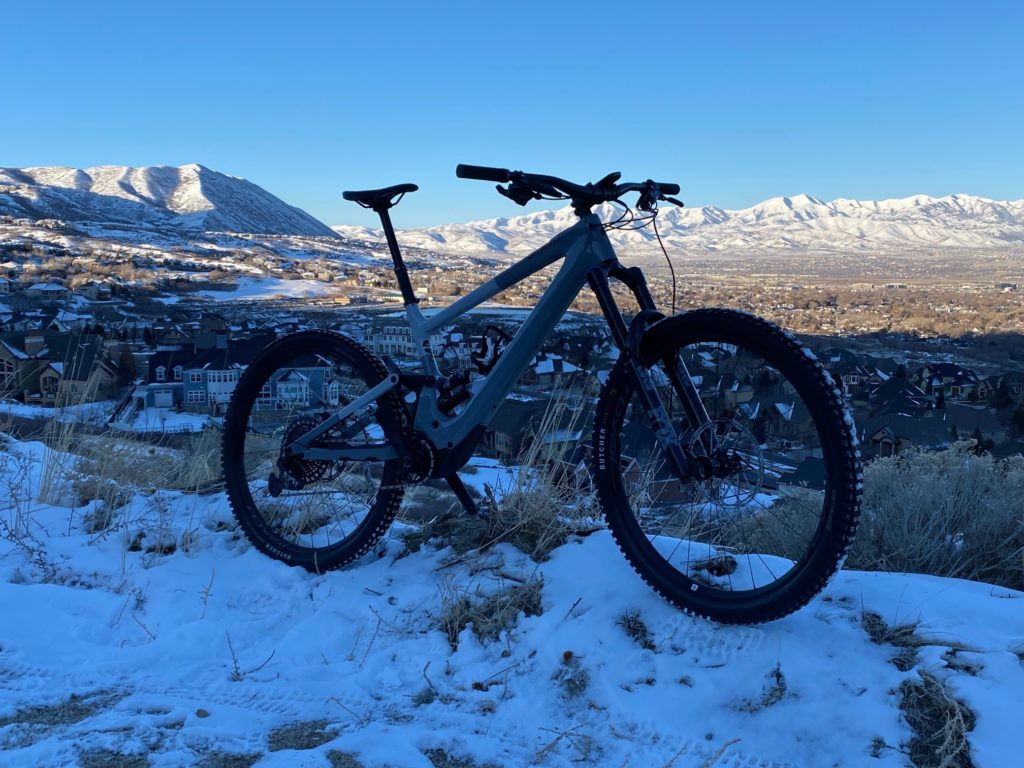Ebikes have electrified the bicycle industry, literally. Ebikes are so common these days that it’s nearly impossible to go on a bike ride on a Corner Canyon trail without seeing one. Ebikes are not only for those who want a little “pedal assist” but are a great opportunity for an aging population or riders with disabilities to get out and ride.
DEFINING EBIKES
There are three types of ebikes, Class I, II and III, here are the differences:
Class I eBike commonly known as pedal assist – uses a battery and electric motor to provide assistance up to 20 MPH while the rider is pedaling, i.e., pedal assist. Class I eBikes can go faster than 20 MPH but the electric motor will stop providing assistance at 20 MPH.
Class II eBikes work in two ways. First, the electric motor provides assistance up to 20 MPH when the rider is pedaling, just like a Class I eBike. Second, Class II eBikes include a throttle, which can go up to 20 MPH without the rider pedaling. The throttle is the difference between a Class I eBike.
Class III eBikes provide pedal assist up to 28 MPH and can or cannot have a throttle. These more powerful ebikes are commonly used by commuters and can be banned from Utah trails and bike paths.
The vast majority of ebikes that you see are class I pedal assist. We will address only class I ebikes in this article. Class II & III must be insured on a separate ebike or motorcycle policy to have physical damage, liability and uninsured/underinsured motorist coverage.
The traditional homeowner’s insurance policy provides liability for a bicycle without a motor. Some companies have a limitation for the amount of physical damage on bicycles. One of the companies we represent only provides bicycle coverage up to $2000.00 so if you have a bicycle that exceeds that amount it’s a good idea to reach out to your agent and make sure you have enough coverage.
The gap in ebike coverage has been created because of the language in traditional homeowner’s insurance policies that excludes “motorized land vehicles.” Under this definition a class I ebike could be considered a motorized land vehicle. Even though they are bikes – they do have motors. Motorcycles are excluded under a traditional homeowner’s policy, but bikes are not so where do ebikes fall in? That is the big question and insurance companies have been slow to respond to clarify if coverage exists or modify policy language to accommodate them. To remove any doubt about the liability and physical damage of your class I ebike it’s best to 1) reach out to your agent to confirm coverage or 2) add additional coverage through an endorsement to your homeowner’s insurance or 3) buy a stand alone policy especially for your ebike.
Another gap exists on the traditional auto insurance policy which does not include coverage for vehicles with less than four wheels. The biggest concern with the auto insurance policy is the uninsured and underinsured motorist coverage. In Utah if you are hit on your traditional pedal bicycle, as a pedestrian, the underinsured and uninsured motorist coverage can provide valuable protection. The question is if UM and UIM will extend to a class I ebike?
Just like when the insurance industry was catching up with the Air BNB craze from a decade ago, the insurance industry is trying to figure out how to best cover ebikes. There are a lot of moving parts including legislation that has defined the classes of ebikes and it takes the industry with many different companies and policies time to figure this out.
In the meantime, with all of the ambiguity that exists, call your agent to be sure about coverage for an ebike on your policy. While your homeowner’s policy may currently cover you for liability and physical damage, that can change at your next policy renewal removing that coverage and unless you are reading all of your policy documents, you could get caught without coverage.
At Anderson Insurance Group we can write an inexpensive ebike policy through Safeco that will include the three basic components of ebike coverage:
- Physical Damage (full coverage)
- Liability
- Uninsured and Underinsured Motorist.
The cost will depend on your age, driving record, value of the bike and insurance score but can range from $100.00 per year to $300.00 per year. Stand-alone bicycle policies are also available through different sources but can be much more expensive.
There are three primary conclusions to the current ebike insurance market in 2022, here they are:
- Some homeowner’s policies will include liability and physical damage for class I ebikes. Check with your carrier to be 100% sure and watch for updates as your policy renews.
- Homeowners policies will not provide uninsured/underinsured motorist coverage and most likely your auto insurance policy will not provide UM/UIM coverage either.
- When in doubt, purchase a separate policy so that you can get all of the coverage you need. Be careful when purchasing insurance online, the coverage can be lacking. A local independent insurance agent can provide the best and most unbiased information.
If you have any questions regarding Utah ebike insurance, please call or submit your question on the form and we will respond quickly.
Until then, keep the rubber side down and be kind and courteous out there on the trails and road.

